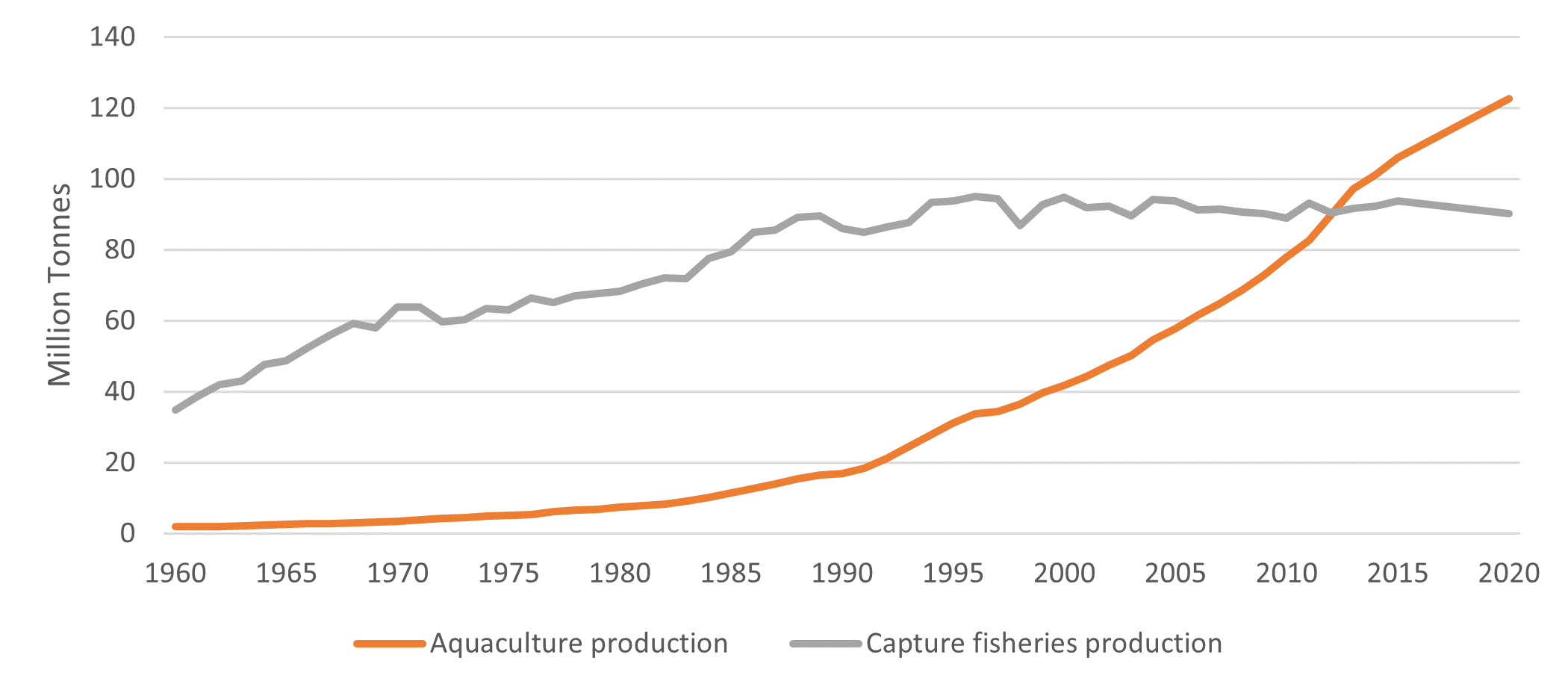- Home »
- Insights »
- DWS Research Institute »
- A new boiling point: Oceans heat up
In fact, latest data from the National Oceanic and Atmospheric Administration show that average sea surface temperatures reached 21.1 degrees Celsius in April, a new all-time high[1], Figure 1.
Figure 1: Global sea-surface temperatures in 2023 compared to previous years since 1981

Source: University of Maine, Climate Change Institute https://climatereanalyzer.org/clim/sst_daily/
This rise in sea surface temperatures has been driven by the role oceans play in absorbing just over 90% of the heat trapped by carbon dioxide emissions since the 1970s
New heat risks ahead
This rise in sea surface temperatures has been driven by the role oceans play in absorbing just over 90% of the heat trapped by carbon dioxide emissions since the 1970s.[2] But this year an additional dimension of risk has appeared in the form of a developing El Niño.[3] This climatic condition triggers warmer waters in the central and eastern equatorial Pacific with negative impacts on the region’s fishing catch as well as the bias to deliver drought conditions to important food producing regions.[4] This reflects the tendency for El Niño events to depress crop yields in Australia and parts of Asia. From an ocean health and climatic perspective, warmer seas are already presenting hazards on multiple fronts:
Warmer water temperatures:
- lead to thermal expansion and so contributes to an increase in global sea level
- lead to the growing frequency, intensity and duration of marine heatwaves which increase the mortality of kelp forests and other coastal vegetation, which are important climate regulators
- drive coral bleaching and inhibits the forming of shells and skeletons in marine animals as pH levels fall and acidity increases
- affect the reproductive rate of cold-water marine species
- increase the levels of evaporation and potentially the threat of more destructive hurricanes and typhoons most notably in the eastern Atlantic and central Pacific[5]
Some of these factors will place even greater strain on the world’s fisheries industry and the estimated 600 million livelihoods which depend at least partially on fisheries and aquaculture.[6] Of the world’s assessed fisheries, 35.4% are overfished these days compared to roughly 10% during the 1970s.[6] Part of the problem has been a doubling in the amounts of fish eaten over the past 30 years.[7] Even though aquaculture has become an important source of growth, the fishing sector is still heavily dependent on wild fisheries as large parts of feedstock for aquaculture comes from wild fish catch - you need the latter to feed the former. [8]
Aquaculture, or more simply fish farming, has been almost entirely responsible for the growth in seafood production over the past four decades compared to wild fish catch which remained relatively constant, Figure 2. In 2020, global aquaculture production reached a record 122.6 million tonnes, with Asia representing just over 90% of that global production. This compared to 90.3 million tonnes in capture fisheries production globally.[9]
Figure 2: Seafood production (wild fish catch versus aquaculture)

Source: Food and Agriculture Organization of the United Nations.
Aquaculture and investor engagement
Warmer waters have potential implications also for aquaculture since it can impact the growth and survival of certain cold-water species such as Atlantic salmon as well as increase the incidence of diseases.[10]
This is important since aquaculture has become such a huge industry, overtaking capture fisheries production around a decade ago (see Figure 2). Here efforts must be focused on improving long-term sustainability credentials including aquaculture companies adopting measures to minimize or mitigate their own environmental and social impact particularly as it relates to carbon emission reduction and ocean health.
Of the world’s assessed fisheries, 35.4% are overfished these days compared to roughly 10% during the 1970s.
For example, they can commit to reduce their greenhouse gas emissions in line with the Science Based Targets Initiative. This can include reducing a reliance on diesel generators by fully electrifying the production sites.[11] Additional areas of engagement can focus on seafood traceability in the supply chain, transparency of marine ingredient certification, ensuring fair and safe working conditions in aquaculture operations and throughout the supply chain, alongside climate change strategies.
When it comes to our Blue Economy engagement at DWS, we are particularly interested in a company's commitment to establishing a science-based long-term roadmap for net zero emissions, including all relevant Scope 3 emissions as well as their efforts in improving ocean health. For example, when it comes to macro plastics, 70% are related to fishing activities.[12]
Sustainable fishing and UNEP FI’s guiding principles
From an investment perspective, it is therefore important to encourage companies to sign up to the Sustainable Blue Economy Finance Principles and for investors to use UNEP FI’s guidance in this area.
The Sustainable Blue Economy Finance Principles were established by WWF, the European Investment Bank, the European Commission and the International Sustainability Unit, and are now managed by the Sustainable Blue Economy Finance Initiative under the United Nations Environment Programme Finance Initiative (UNEP FI). The Principles aim to guide finance and investment decisions towards the most sustainable development pathways and to ensure that ocean-related investments create long-term value without having negative impacts on:
- Marine ecosystems
- Efforts to reduce carbon emissions
- The income streams of ocean-related businesses of all sizes and
- The livelihoods of people who depend on them.
They are designed to be consistent with the Sustainable Development Goal for Oceans (SDG 14) and complement existing frameworks for responsible investment such as the Equator Principles and the UN PRI.
Everybody can do their part
From a personal perspective, consumers can help drive more sustainable fishing practices by purchasing Marine Stewardship Council (MSC) labelled products. At the end of March 2023, 19% of the global seafood catch was either certified or in assessment to the MSC Standard.[13]



